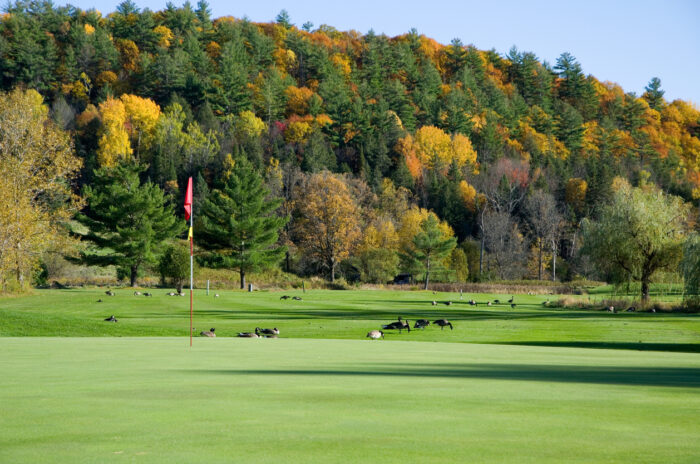Study finds golf courses offer significant environmental benefits
A US study of 135 golf courses in Minnesota has found that they offer major benefits to their local environment, particularly surrounding temperatures, pollinating, retaining stormwater nutrients and biodiversity.
The research could have major ramifications as it suggests that converting golf courses into estates dominated by housing, a trend in the UK in recent years, could be even more detrimental to the environment than had previously been thought.
Believed to be the biggest ever study conducted on the environmental impact that golf courses have on their communities, the USGA-funded Community Values of Golf Courses project saw researchers at the University of Minnesota and Michigan State University compare and contrast the golf courses with five other land uses: natural areas, city parks, suburban residential zones, urban residential zones and industrial parks.
The researchers demonstrated that properly managed golf courses provide the greatest amount of cooling among land uses, are more supportive of pollinators than urban residential or industrial areas and retain more nutrients from stormwater runoff than suburban or urban residential areas.
They concluded that golf courses enhance surrounding communities in much the same way as city parks or open green spaces.
Correspondingly, the conversion of golf courses to residential or industrial use would sacrifice associated environmental value afforded to communities and could result in reduced biodiversity and increased temperatures and nutrient transport to surface and ground water, they added.

“This research marks a significant moment for public golf as courses around the country face the continued threat of redevelopment for residential and commercial use,” USGA CEO Mike Davis said.
“It is critical to the health of our communities, particularly in urban areas, that golf courses are viewed through the same lens as a city park or other similar green space, and value is placed on their environmental benefits as well as their balance sheets.”
“As the world transitions to a more urban lifestyle, it is critical that we understand the consequences of development decisions on urban green spaces,” said the University of Minnesota’s Natural Capital Project programme director Dr Eric Lonsdorf.
“Examining the environmental and societal impact of changing a golf course’s land footprint to a different land cover or management type can help us understand the implications of that decision on the ecosystem services provided by green spaces to the surrounding community,” added Dr Brian Horgan, a professor from Michigan State University’s Department of Plant, Soil and Microbial Sciences.















?? Is this an objective, unbiased assessment?
No new news here !! Especially since a younger generation of talented superintendents have changed their approach to pesticides, water management and selling their approach to membership !! If only lawn care companies had the same purpose !! It’s up to management to sell more reasonable expectations to members, the community and others !
Compared to the woodlands they replaced?